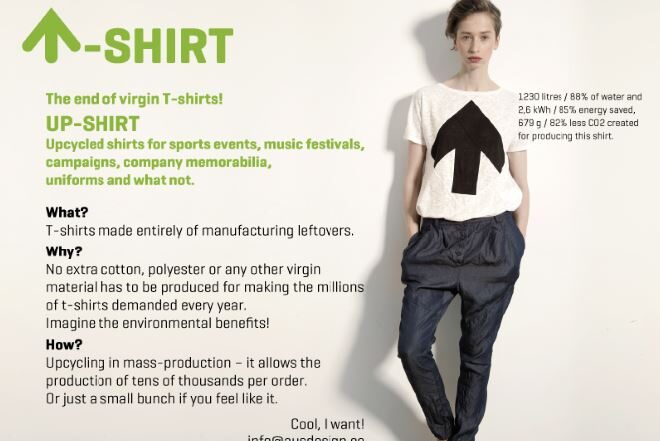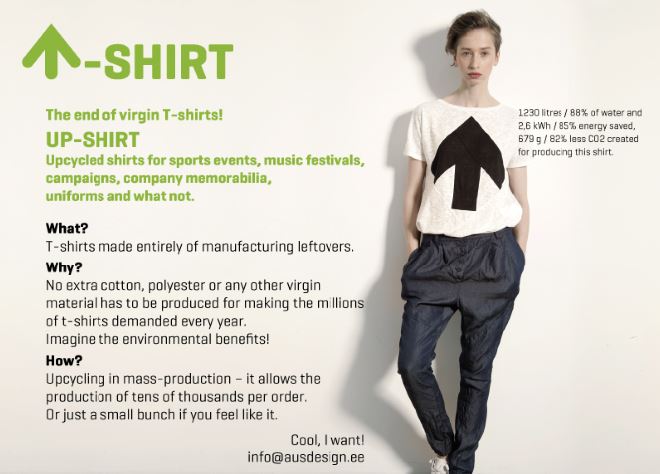Up-shirt, the t-shirt with the world’s smallest environmental footprint

Thousands of public events such as concerts, sports events or festivals print t-shirts for that occasion and after being worn only once they are relegated to the closet. Imagine the amounts of water required for the production of those millions of t-shirts!

Thanks to new up-cycling design and production methods it is now possible to organise the mass production of a t-shirt with a 80% smaller environmental footprint. How?
The thing is, factory made t-shirts yield up to 40% wastage. That means 40% of that cotton is grown in vain and huge amounts of water and earth resources are wasted, not to mention spinning the yarn, transporting the fabric, factory labour … you get the idea.
It’s taken years of hard work and research but Upmade came up with a design and production model to mass produce t-shirts using that leftover 40%. They believe that if they can show the world that mass up-cycling works, they could really change how the fashion industry impacts the environment.
This experience was one of the Zero Waste ideas that was presented during the event “Beyond Recycling: Towards a Zero Waste Europe” which took part in the European Parliament in March 2013, we wish to upmade.org all the luck in this enterprise!
The back story
Reet Aus is a fashion designer and environmentalist. She has been up-cycling her own fashion collections for many years, as well as designing costumes (also upcycled) for theatre and film.
Recently Reet completed her PhD in sustainable fashion design. Her research took her to Bangladesh, where she began working with a factory called Beximco. Beximco make garments for many well known brands, and in the process accumulate a LOT of waste fabrics. But Reet didn’t see a mountain of garbage, she saw treasure! And she set to work.
Reet gathered her team of experts, and together we took cutting leftovers (8-30%), roll ends (1-10%) and over production (3-5%) and got creative. The result is the up-shirt.Factory made t-shirts yield up to 40% wastage.